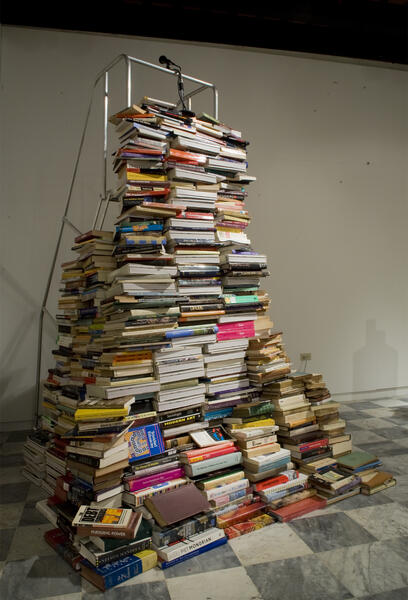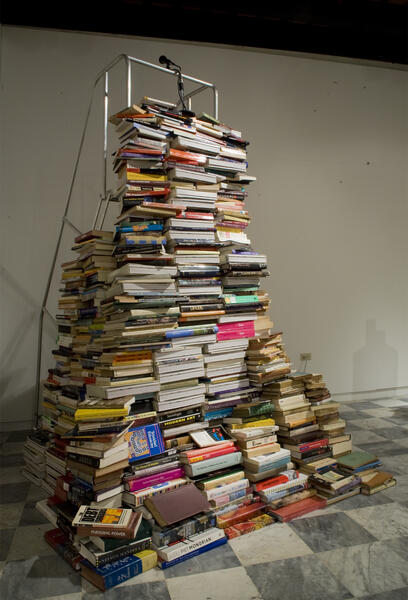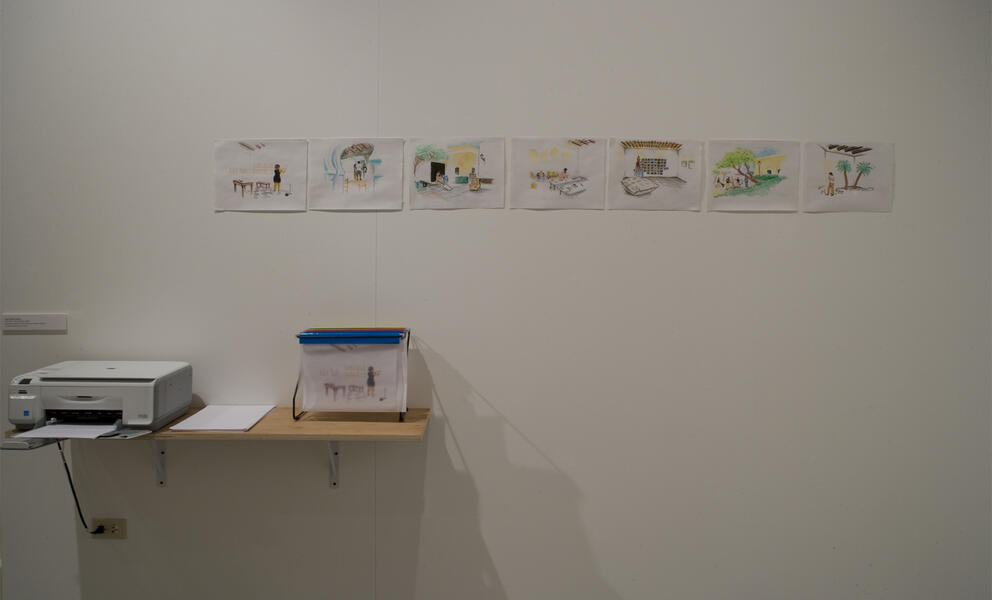Deborah Cullen nominated Chief Curator for the Trienal Poli/Gráfica de San Juan of 2012
Director of Curatorial Programs at El Museo del Barrio, has been appointed Chief Curator of the 3rd edition of the Trienal Poli/Gráfica de San Juan: América Latina y el Caribe, scheduled to take place in Puerto Rico in April 2012. Cullen brings her long-standing passion for graphics, coupled with her keen understanding of modern and contemporary Caribbean, Latino and Latin American art to this milestone event, which will bridge Puerto Rico’s contemporary artistic scene with the rest of the Americas and the globe.

Cullen has invited curators Antonio Sergio Bessa, Director of Programs, Bronx Museum of the Arts; Ursula Davila Villa, Associate Curator of Latin American Art, The Blanton Museum of Art, University of Texas-Austin; and Rebeca Noriega Costas, Independent Curator, Puerto Rico, to compose the Curatorial Team. Her working proposal for the Trienal looks at the graphic as a social network. Over the course of the twentieth century, leaving an (often unrecognized) legacy today, Caribbean, Latino, and Latin American artists have played critical roles in key international printmaking workshops; within collaborative artists’ groups centering on graphical practices such as posters, artists’ books, and zines; and as originators of multiples utilized in ephemeral circuits of expression such as mail, fax, and Xerox art, and digital and web-based applications. Their history is not one of its own, but rather intertwined within the larger histories of art.
The third edition of the Trienal Poli/Gráfica de San Juan: América Latina y el Caribe will discuss the history and currency of graphic practices by examining these as vital and essential social networks, real or virtual, in which people, culture, and practices have converged. By bringing to light key connections and significant, linked histories, a wide-range of artistic nexuses will be examined, including forerunners (prior to 1960), conceptual (1960s-1980s), and contemporary artists (1990s-today). The third Trienal will emphasize the role of the graphic in bringing people together to work collaboratively.
An important element of this edition of the Trienal will be the commissioning of new multiples and works by rising artists, offering as much assistance as possible to artists in these challenging financial times. A bilingual, internationally-distributed catalogue will further pursue this end, while sections of the Trienal will be available for tour after its San Juan debut. 2
About Deborah Cullen
Deborah Cullen, PhD, joined the curatorial staff of El Museo del Barrio in 1997. Her latest project was Retro/Active: The Work of Rafael Ferrer (June-Aug 2010), the first museum retrospective of the renown Puerto Rican artist. She is also authoring a monograph on Ferrer for the A Ver: Revisioning Art History publication series of the Chicano Studies Research Center, UCLA. Other recent exhibitions include Nexus New York: Latin/American Artists in the Modern Metropolis (Oct 2008-Feb 2009) and the internationally-travelling Arte ≠ Vida: Actions by Artists of the Americas, 1960-2000, for which she received an Emily Hall Tremaine Exhibition Award (2006). Cullen was a fellow of the Center for Curatorial Leadership (2010).
She has also been a recipient of a J. Paul Getty Curatorial Research Fellowship, and a Curatorial Award from Faith Ringgold’s “Anyone Can Fly” Foundation. Cullen serves on the Board of the Association of Art Museum Curators (AAMC); the Institute of Cultural Inquiry, Los Angeles (ICI); and the Board of Governors of the Robert Blackburn Printmaking Workshop, New York, as well as the Advisory Boards of the International Print Center-New York and the Agustín Fernandez Foundation.
Previous exhibitions curated or co-curated by Cullen include MoMA at El Museo: Latin American & Caribbean Art from the Collection of the Museum of Modern Art (El Museo del Barrio, 2004); None of the Above: Contemporary Work by Puerto Rican Artists (Real Art Ways, Hartford, CT; traveled to Museo de Arte de Puerto Rico, 2004); ¡Impresionante! Continuity and Change in Puerto Rican Printmaking (The International Print Center-New York, 2004); Voces y Visiones: Highlights from El Museo del Barrio's Permanent Collection (2003, traveling); Creative Space: Fifty Years of Robert Blackburn's Printmaking Workshop (Library of Congress, Washington D.C., and traveling, 2002); Here & There/Aquí y Allá: Six Contemporary Artists from San Juan (El Museo del Barrio, traveled to Blaffer Art Galleries, University of Texas-Houston, 2001-2002); and the first four editions of El Museo’s Bienal: The (S) Files/The Selected Files (1999, 2000, 2002, and 2005), among many others.
About the Trienal Poli/Gráfica de San Juan: América Latina y el Caribe
The Bienal de San Juan (1970-2001) was the first and oldest meeting ground for the Latin American graphic arts. In 2004, it became the Trienal Poli/Gráfica de San Juan: América Latina y el Caribe. This transformed Triennial, an official event of the Commonwealth of Puerto Rico presented under the auspices of the Instituto de Cultura Puertorriqueña, expanding the spectrum of the graphic arts from traditional engraving to the more ample concept of poligraphic art, which includes all kinds of mediums and artistic languages. The term “poligrafic” was devised to characterize those innovative forms of expression that incorporate graphic art and printmaking as 3
media inserted within a more expansive artistic framework. It implies the hybridization of techniques and idioms, the implementation of self-reflexive or self-referential resources with respect to the printmaking medium and its ideology, as well as the incursion into an expanded domain where printmaking recovers some of its original traits, such as seriality, and the potential impermanence of the imprint or image.
About El Museo del Barrio, New York
El Museo del Barrio, New York’s leading Latino cultural institution, welcomes visitors of all backgrounds to discover the artistic landscape of the Latino, Caribbean and Latin American cultures. Their richness is represented in El Museo’s wide-ranging collections and exhibitions, complemented by performing arts, music concerts, cultural celebrations, and educational programs. A dynamic artistic, cultural, and community gathering place, El Museo is a center of cultural pride on New York's Museum Mile.
El Museo was founded 40 years ago by artist and educator Raphael Montañez Ortiz and a coalition of parents, educators, artists, and activists who noted that mainstream museums largely ignored Latino artists. Since its inception, El Museo has been committed to celebrating and promoting Latino culture, thus becoming a cornerstone of El Barrio , and a valuable resource for New York City. El Museo’s varied permanent collection of over 6,500 objects spanning more than 800 years of Latin American, Caribbean, and Latino art includes pre-Columbian Taíno artifacts, traditional arts, twentieth-century drawings, paintings, sculptures and installations, as well as prints, photography, documentary films and video. For more information on El Museo del Barrio, please visit www.elmuseo.org.






